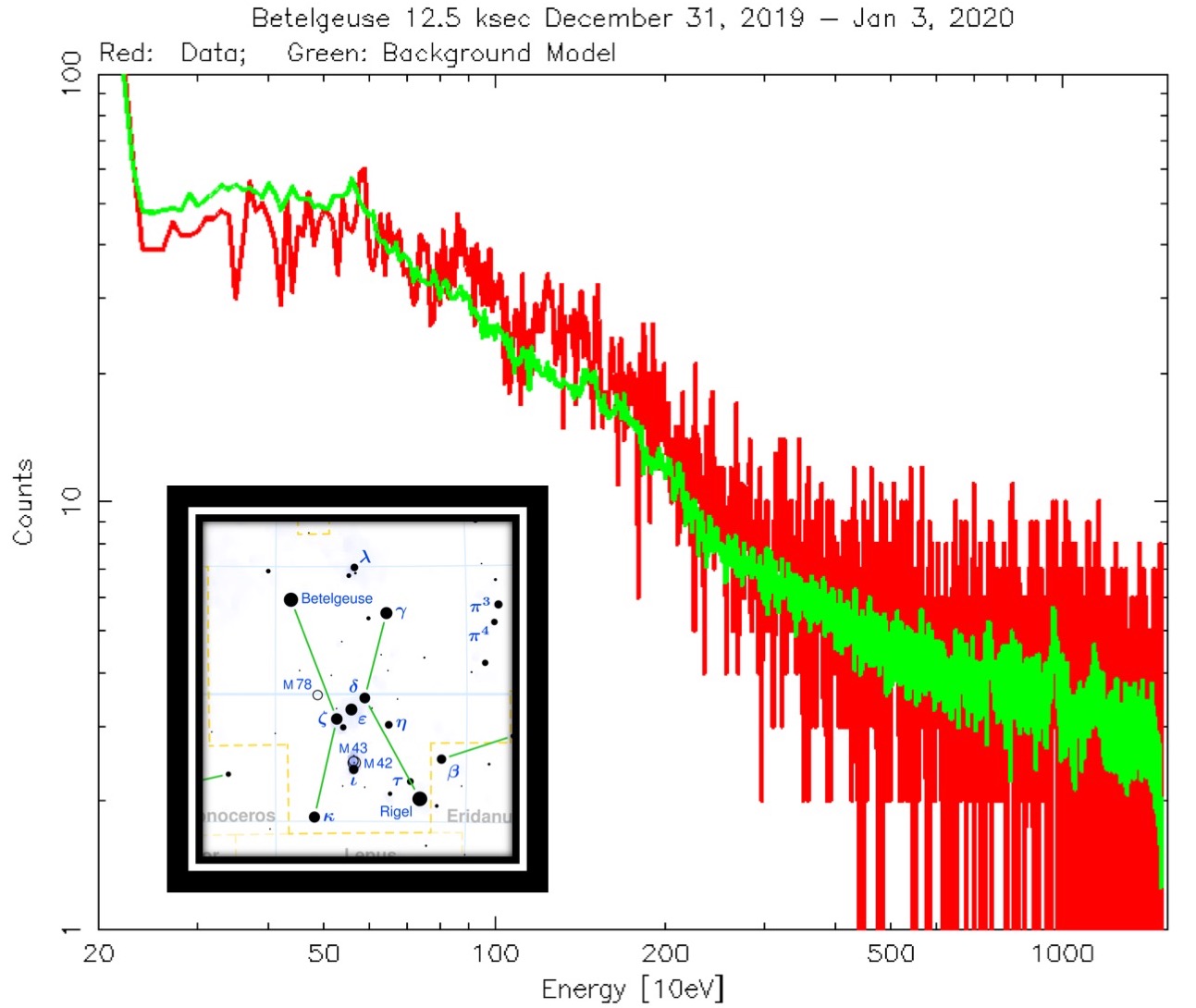NICER / ISS Science Nugget
for January 9, 2020
NICER observes Betelgeuse in response to recent dimming
From December 31st through January 3rd, NICER observed the red supergiant Betelgeuse located about 650 light years away
in the constellation Orion.
Betelgeuse was the 11th brightest star in the sky- clearly visible to the naked eye with a red color. Over the past
few weeks, Betelgeuse has noticably dimmed due to an unknown mechanism. It is possible that this is a precursor to the
end of its life in a future supernova explosion. Betelgeuse is only about 10 million years old- but being 10-20 times
the mass of the Sun, is expected to explode in the next 100,000 years likely illuminating the sky as bright as the full
moon and resulting in the birth of a neutron star.
Previous observations of Betelgeuse in the X-ray band have only
shown upper limits, suggesting little high energy activity on or around the star (such as collision of a fast stellar
wind, or solar-type magnetic plasma heating). NICER observed the star to find if the mechanism that dims the visible
light could prompt a high energy activity. NICER observations (see figure) are consistent with these earlier
observations.

Figure:
The NICER measured X-ray spectrum (red) of Betelgeuse for 12.5 ksec on December 31st and January 3rd are consistent
with background estimates (green) and thus no X-ray emission. The inset shows the location of Betelgeuse within the
Orion constellation.
<< Previous
Main Index
Next >>